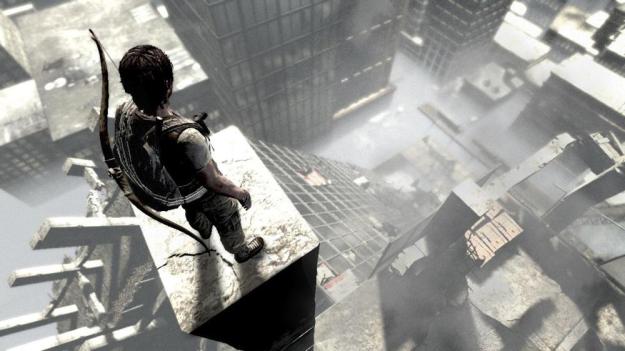 One day, years from now, we will be cleaning out our garage/attic/underwater pods (it could happen…), and discover an old game on a disc. We may then call the kids down to gaze in wonder at the relic in our hands, before throwing it in the trash and laughing about how quaint we used to be.
One day, years from now, we will be cleaning out our garage/attic/underwater pods (it could happen…), and discover an old game on a disc. We may then call the kids down to gaze in wonder at the relic in our hands, before throwing it in the trash and laughing about how quaint we used to be.
It may take a long, long while, but the industry is moving more and more towards games that are available digitally, rather than on a physical piece of media–just look at the success of Steam. There are still a lot of good reasons to purchase games on disc, but eventually that technology will be left behind and physical media will go the way of the 8-track.
In many ways, Microsoft is on the fence about the future of how to distribute games. On one hand, physical media is still key in helping to prevent piracy. There are other reasons for keeping games on discs, but that is the main one—that’s the reason you need to have the disc in the tray to play it, even after installing the game to your hard drive. And as a manufacturer of a console, it makes sense that keeping piracy down is a high priority for Microsoft, so that probably won’t change anytime soon.

On the other hand, digital distribution of games is big business, and Xbox Live has become an increasingly vital source of income on the Xbox 360. Each year the sales figures grow exponentially, as does the content. For the most part, the available content has been primarily DLC, full copies of older games, and arcade games that are interesting alternatives–but not competitors–to full retail releases. Speaking in vastly generalized terms, the arcade games could entertain, but not really win over hardcore gamers (with a few notable and award-winning exceptions). That has begun to change.

Coming next month, Microsoft will begin its Arcade House Party where one new, fairly big arcade game is released each week for a month. It is similar to the “Summer of Arcade” games from last year which saw the release of the incredibly popular Bastion among others, but the upcoming lineup is even bigger. As an added bonus, those that purchase all four titles between February 15 and March 13, will receive 800 MS Points back.
Kicking it all off on February 15 will be Warp (800 MS Points). Warp is a puzzle-based stealth title that puts you in the shoes of Zero, a lethal alien trying to escape an underwater facility. The game is geared towards mature audiences, but has a humorous streak running through it.

Next up on February 22 will be one of the biggest XBL releases of the year, Alan Wake’s American Nightmare (1200 MS Points). The game isn’t a sequel to the 2010 original, but rather a stand-alone title that features a new storyline, a new location, and a horde/survival-like challenge mode. It isn’t quite a sequel, but it is more than a DLC.
The third release will be Nexuiz (800 MS Points), a first-person shooter set in an alien arena where you can alter the laws of physics to crush your enemies, see them driven before you, etc. etc. It will be available on February 29.

Finally, the House Party will conclude on March 7 with the long-awaited I Am Alive (1200 MS Points). For years, this game was teased as a full retail release, but then developmental delays–including the loss of its original producer–seemed to spell the end of the game until Ubisoft Shanghai stepped in to save it. A survival game in the truest sense, you are a survivor of a massive, worldwide disaster. As you explore the ruins of a crumbling city looking for food and water, you must also deal with increasingly desperate people that could be friends or enemies.
Of the four games, Alan Wake will likely get the most attention as it expands on an already popular game, but I Am Alive may be the most intriguing. For years Ubisoft teased us with promotional images of a beautifully crumbling city, but the game kept facing delay after delay. Then last year, it announced that I Am Alive would be released as a downloadable game, surprising many. Not only does it look like a potentially solid game in its own right, perhaps it could point the way for other games that begin their lives as AAA releases but slide into development limbo. It could be a second chance for developers, publishers, and gamers.
The growth of the arcade titles could also give developers a new proving ground for titles. New gameplay mechanics could debut in a game on XBL, as could more original titles–just look at a game like Limbo, which was one of the best games of 2010, but would likely have been ignored as a retail release.
Three years ago, the majority of arcade games were little more than mini-games or re-releases of older games. That is changing. And while the games geared specifically for online purchase may not yet rival full releases, they are getting there.
{This post has been edited to correct a typo in the pricing}


